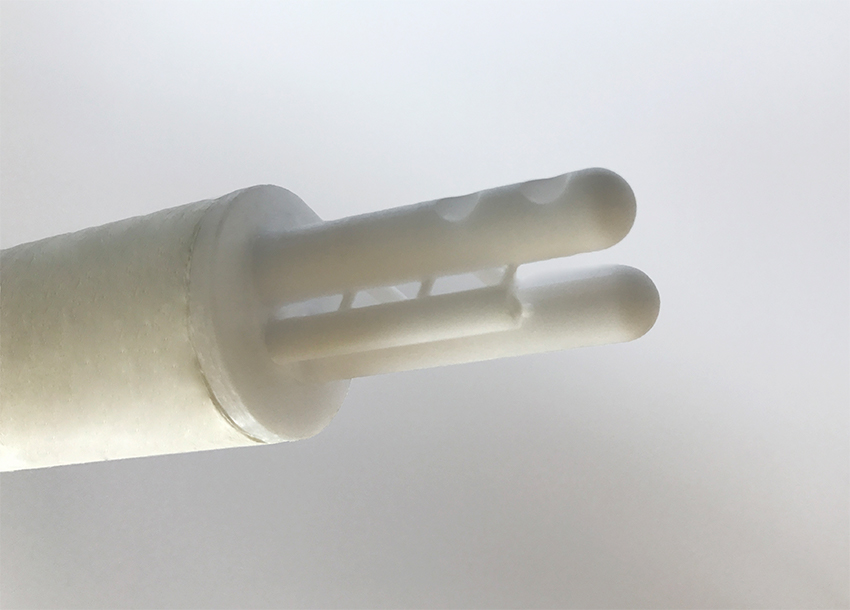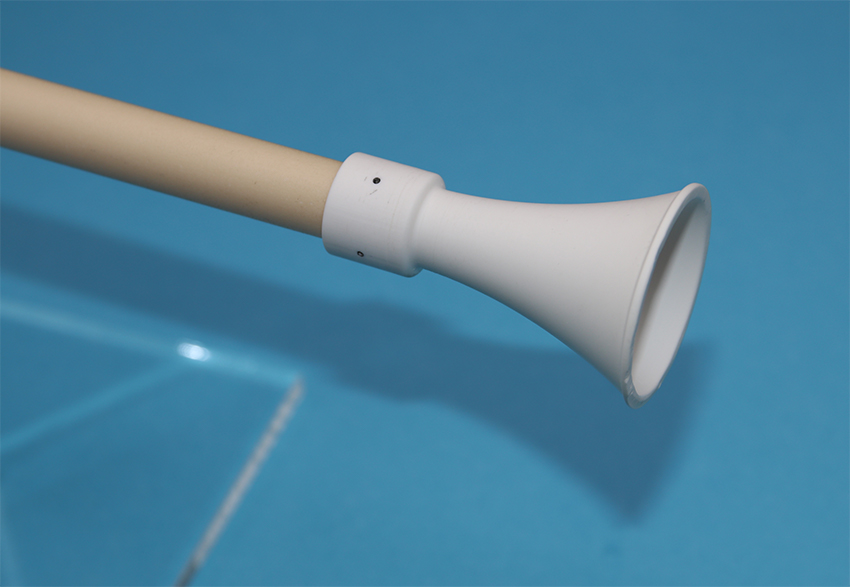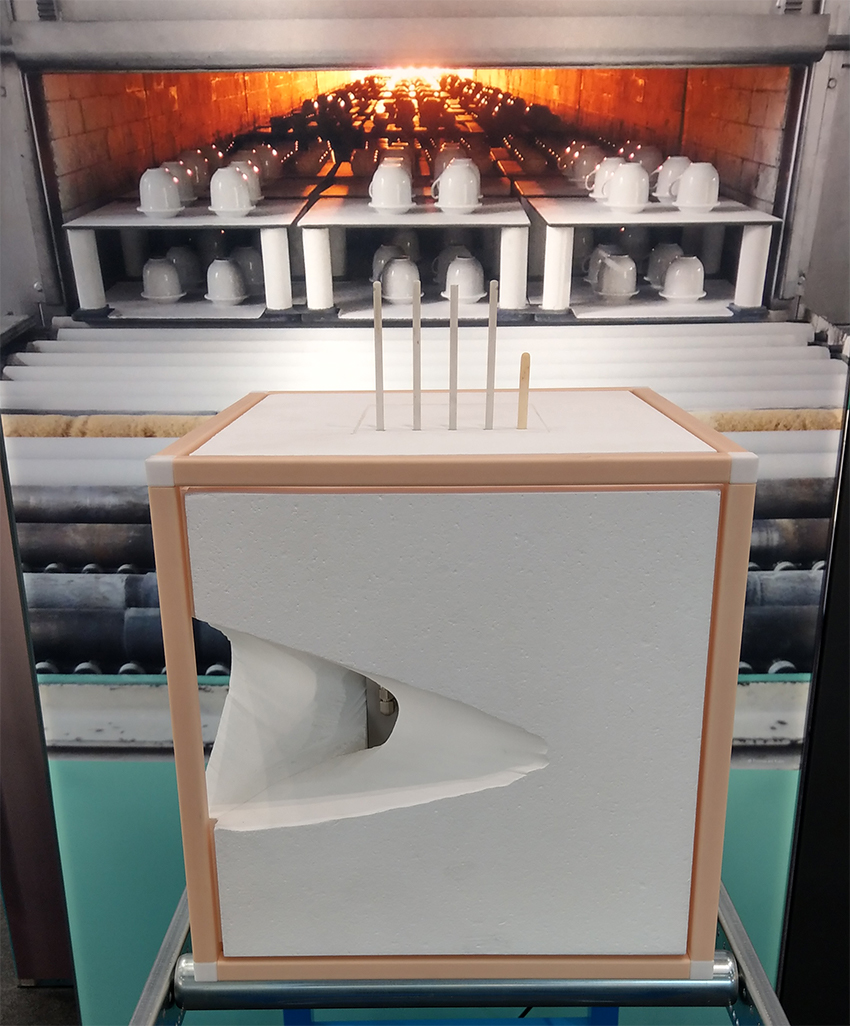Fraunhofer Center HTL develops customized robust high-temperature sensors for thermal processes. To withstand high operating temperatures, the sensors are mostly made of ceramic components. Particularly short response times are achieved through delicate structures produced in 3D printing. Particularly high thermal shock resistance is ensured by protective covers made of CMC (Ceramic Matrix Composites). Prototypes and small series can be manufactured at the HTL. Measurement electronics and data evaluation software are also developed at the HTL if required. The HTL has test setups to test the operational behavior of high-temperature sensors under defined conditions.
Sensor Development
Depending on the task, temperature measurement is carried out using either the Seebeck effect, or the temperature coefficient of electrical resistance, or thermal radiation. Encapsulated measurement systems are used under harsh conditions. Temperature measurement systems for commercial pyrometers are also designed for specific purposes. For example, pyrometers can also be used for the very fast measurement of temperature changes using special amplifiers. Selected melting point standards are used for temperature calibration. Temperature distributions are recorded by conditioned and calibrated test bodies, such as temperature measuring rings. Temperature measurements are still possible at temperatures above 2000°C.
The flow velocity in the hot furnace is measured in a direction-dependent manner using dynamic pressure sensors. The measurement of thermal radiation is also carried out in different spatial directions via differential thermocouples. Thefurnace atmosphere, e.g. CO, CO2, SO2, NO2, and CxHy, is measured in the exhaust air with electrochemical sensors, or by sampling gas or - in the hot furnace – either spectroscopically or by using oxygen-ion conductors. Sound emission measurements are made via acoustic horns and trumpets. Sensors for optical monitoring and weight measurement in the hot furnace are also designed if required.
The sensors can be temporarily introduced into the furnace on measurement lances, heated in thermal protection containers with the charge, or installed permanently in the furnace. The sensor signals are led out of the oven using keyhole diagnostics to minimize the influence on the thermal process. Autonomous sensor operation with wireless power supply and data acquisition is possible to facilitate handling during ongoing furnace operation. After digitization, common industry standards are used for data processing. Software is created on request to integrate the sensors into process monitoring.
Service Offering:
- Design and construction of customized sensor systems for high temperatures
- Sensors for temperature, gas flow, thermal radiation, gas composition, etc.
- Sensors for high-pressure and melting processes or corrosive atmospheres
- Keyhole diagnostics for minimally invasive coupling of sensors to the furnace
- Development of software for data acquisition and analysis and integration into process control systems
 Fraunhofer ISC, Center for High Temperature Materials and Design HTL, Bayreuth
Fraunhofer ISC, Center for High Temperature Materials and Design HTL, Bayreuth


